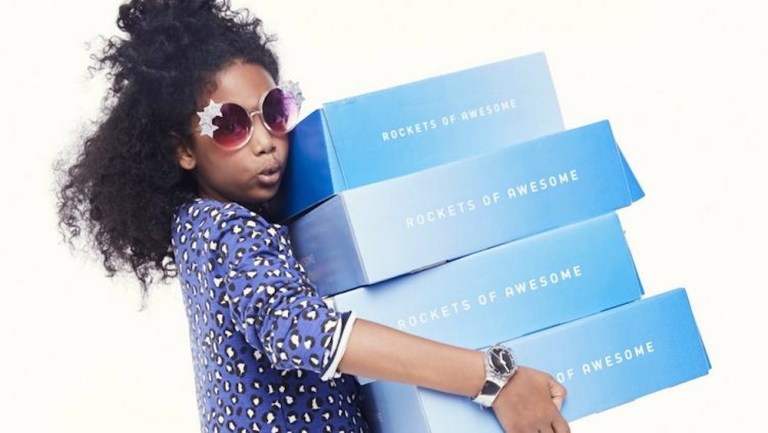
Outfitting one’s offspring is not cheap. Lower and middle income families are on the hook for about $640 a year in kids’ clothes, while the affluent are spending closer to about $1,000 a year to keep their kids sartorially appropriate.
And that’s just regular day-in and day-out clothes. If you have a child that happens to plays a sport, get ready to throw down an additional $650 on top for their uniforms and specialty clothing. Cleats don’t come cheap.
And apart from the expense, which is not inconsiderable, there is also the strain, particularly for parents with children who are picky about how they are dressed when they meet and greet the world. Some kids would be happy to wear the same T-shirt and jeans combination until they graduate from high school — others have viewed everyday of school since the first day of kindergarten as an opportunity to redefine the concept of fashion forward.
So what is a harried parent to do?
Turn to the internet, of course.
Because, as it turns out, dressing children may be the next phase forward in retail eCommerce, if for no other reason it is the most consistent generator of spend. Adults buy clothing for reasons of desire, while kids’ clothing is bought out of necessity. Tapping into that necessity — and removing the hurdles that tend to make the experience unpleasant — is increasingly shaping the newest frontiers of retail innovation.
Take Kidpik, the clothing on-demand service for ages 3-12, headed by former Children’s Place CEO Ezra Dabah.
The premise is simple. Kids (or their moms) fill out a style questionnaire from which the site assigns one a designation. Since the service is only focused on girls clothing, it then spits back a “style classification” for the young shopper. Options range from GirlyGirl to Modest to Classic Chic. What is “classic chic” on a 3-year-old? The mind boggles, but Kidpik feels certain they have it figured out.
From there the service sends customers a box of clothes once a month (if they sign on for subscription — it seems one-off boxes can also be ordered, though with less selection available) and customers can keep all, some or none of the clothing they’ve been sent. If they keep all of it, they get a discount in the 30 percent range. The average box cost is between $75-$100, depending on the pre-designated spending limits set in the survey.
For a slightly different variation on this theme, however, there is also New York-based and fantastically named Rockets of Awesome. Though similarly premised, the services are pretty essentially different.
Rockets of Awesome sends along boxes of curated clothing to their shoppers, though only once a season (the boxes are larger, containing around 12 clothing items). They are open to both boys and girls, and they sell toys as well as clothes. According to their founder, their vision is pretty clear: take the pain out of outfitting children. Each item will be roughly $20, making each shipment approximately $250. But users have to pay for the full boat only if they decide to keep all the clothes. They are also free to send it back, and there is no subscription fee or minimum charge.
“The idea for Rockets of Awesome really comes from being a parent and experiencing the frustrations of shopping for my kids,” said Rachel Blumenthal, founder of Rockets of Awesome and mother of two. “Shopping for kids’ clothes, size 2 to 14, is an ongoing chore that requires parents to shop every two to three months.”
The biggest difference between the two services, however, is that KidPiks is essentially choosing and curating the clothing of other clothing retailers by utilizing experienced retail specialists to come up with the all-around apparel. Rockets of Awesome, on the other hand, is designing their own with the help of some very experience professionals. Stylists come from all around apparel retail, from chic places like J.Crew and Kate Spade and from notable children’s firms such as OshKosh B’gosh, Gap Kids and 77kids.
“We want to be able to deliver both style and value in a very seamless and easy way to shop,” said Blumenthal. “We want the collection to be something parents are really excited about.”
“All the clothes are super stylish,” she noted in an interview with TechCrunch. “But they’re also super comfy. The pants are lined with T-shirt material to make them soft, and the sweatshirts are extra cozy and stretchy.”
And thus far investors are certainly interested in the firm as it navigates its early days. In February, the startup raised $7 million in seed funding from LAUNCH, Forerunner Ventures and General Catalyst Partners.
So will kids’ clothes subscriptions change the way parents shop? Probably not for all, since as of now it is an expensive way to keep one kids clothed.
But for busy parents with high style guidelines, maybe. It will depend on how good their out of the box (we’re sorry, the pun needed to happen) decisions on kids’ clothes turn out to be.